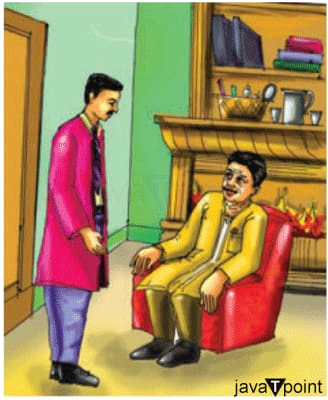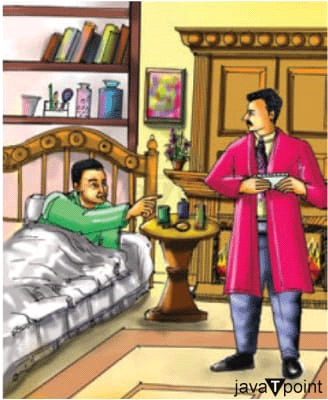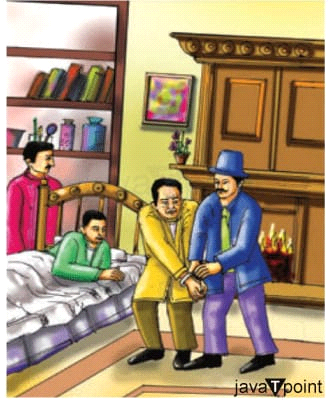The Dying Detective Story SummaryIntroductionThe detective's cunning manoeuvre to identify the offender is described in an intriguing manner by the author. When Sherlock Holmes suffering from incurable illness his landlady, Mrs. Hudson, notified Dr. Watson that Mr. Holmes was passing away. For three days, he was confined to bed. He hadn't eaten or drunk anything. He was going down. Only Dr. Watson was allowed to know about the tenant's condition from the landlady. She was unable to call for a doctor because Sherlock Holmes had stopped her. When Dr. Watson encountered Holmes, he warned him to avoid him since he was ill with a contagious illness that he had acquired at Rotherhithe. The Sumatran sickness was fatal and contagious even at the slightest contact. About AuthorIn Edinburgh, Scotland, on May 22, 1859, Arthur Ignatius Conan Doyle was born. The Doyles were a rich Irish Catholic family. In addition to raising a bright child, Arthur's father, chronic alcoholic Charles Altamont Doyle, was a mediocre artist who never accomplished anything particularly outstanding. Charles wed Mary Foley, a lively and bright young woman, at the age of 22. Mary Doyle was an excellent storyteller and loved to read. According to her son Arthur, her mother had the gift of "sinking her voice to a horror-stricken whisper" when she reached the conclusion of a story. The family had little money and was considerably less cohesive because of his father's excesses and erratic attitude. According to Arthur's book, his mother had a beneficial influence on him growing up. He writes, "In my early childhood, as far as I can remember anything at all, the vivid stories she would tell me stand out so clearly that they obscure the real facts of my life." Characters
Summary in a NutshellThe novella "The Dying Detective," which serves as the lesson, was written by Arthur Conan Doyle and includes a Sherlock Holmes-related incident. Holmes' landlady, Mrs. Hudson, approaches Dr. Watson, a friend of Holmes, to let him know that he is extremely ill and close to passing away. Watson offers to cure Holmes, but the latter refuses to visit a doctor and forbids Watson from even getting close to him. Additionally, he claims to have Tarpaulin sickness, commonly known as the black Formosa plague. He gives Watson the assignment to stay with him until six o'clock in the evening before departing to pick up Mr. Culverton Smith, a planter. 
When Smith shows up, Holmes admits that he had been investigating the death of Smith's nephew Victor Savage. He was never seriously ill, since he had learnt to be wary of any parcels he received in the mail. 
Culverton Smith was the one who used an ivory box to kill his own nephew Victor Savage with the disease. Without a doubt, Mr. Culverton Smith was ultimately responsible for the deaths of Victor and for attempting to kill Sherlock Holmes by giving him the same ivory box. Overall, in the story, Sherlock Holmes used his devious methods to discover the truth about a crime committed by Mr. Culverton Smith. ConclusionThe author has made it clear that a criminal cannot get away for very long and may even be caught by his own statements. The storyline of "The Adventure of the Dying Detective" is very straightforward; the mystery isn't particularly complicated, but Sherlock adds to it with all his cunning techniques. AnalysisOne of the finest detective characters ever created in literature history, Sherlock Holmes, is portrayed in the lesson "Dying Detective" by Arthur Conan Doyle. This narrative employs suspense and a twist as key components, much like any other detective fiction. Readers experience the story's journey and its surprises in a manner similar to how the characters do. There is no element of suspicion present because Sherlock is originally depicted as being ill. But as the narrative goes on, he refuses Watson's attention and acts a little rudely, which leaves us wondering. Watson does not have any suspicions about Mr. Smith when he first appears because Holmes has nothing but praise for him. 
To provide weight to the twist that is about to unfold, this aspect is employed in detective novels. Smith first makes no confessions at all. Slowly, Holmes gains his confidence. People cease using logic when they are complimented. Smith enjoys that Holmes is at his mercy in a similar manner. Additionally, he notices the ivory box and is convinced that Holmes was stung by it. He gradually lowers his guard and, as a sign of victory, admits to killing his nephew. He makes the poor choice to gloat, therefore he is arrested. FAQ'S1. Holmes picked up the sickness from the dying detective, but how? Smith was coerced into confessing to the crime by Holmes by pretending to have poisoning symptoms. He said that when he opened a box he had gotten in the mail he was stabbed by a sharp spring. 2. What led the landlord to believe that Holmes was passing away? Sherlock Holmes's landlord was Mrs. Hudson. She was concerned about his health because Holmes had gone three days without eating or drinking. 3. Watson was asked to reappear before Mr. Culverton Smith for what reason? Holmes requested Watson to get Mr. Culverton Smith of 13, Lower Burke Street to come and inform him that he was passing away. 4. How did Holmes become ill? Holmes contracted a Sumatran sickness that was extremely fatal and infectious. He contracted the illness while working on a case in an alley close to the river.
Next TopicA Devoted Son Summary
|
 For Videos Join Our Youtube Channel: Join Now
For Videos Join Our Youtube Channel: Join Now
Feedback
- Send your Feedback to [email protected]
Help Others, Please Share









